Why Art Education Matters
Have you ever wondered why is art education important?
Many people underestimate the true value of art education and see it as a non-essential part of the school curriculum. However, I firmly believe that learning about art and artistic expression is essential for our children’s growth and development.
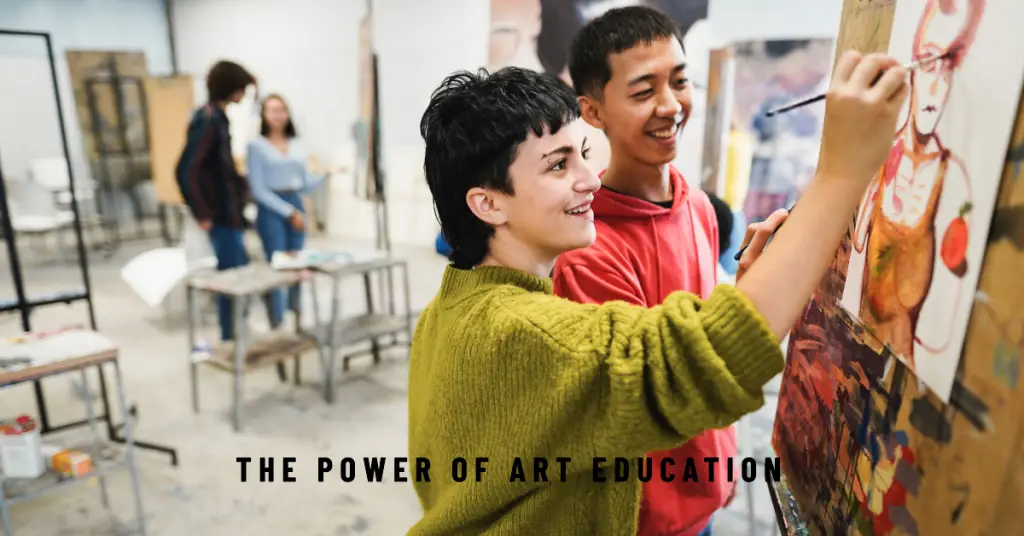
Art education is often considered an extracurricular or recreational pursuit, but its significance goes far beyond being a hobby.
Art education plays a vital role in the overall development of individuals, nurturing their creativity and offering numerous benefits that extend to various aspects of their lives.
From enhancing cognitive abilities to fostering problem-solving skills and promoting cultural understanding, the importance of art education cannot be overstated.
This article delves into why art education is important and highlights the many benefits of creative learning for individuals of all ages.
Engaging in art can profoundly impact personal growth and societal well-being through painting, sculpting, or any other form of artistic expression.
Table of contents
The Importance of Art Education
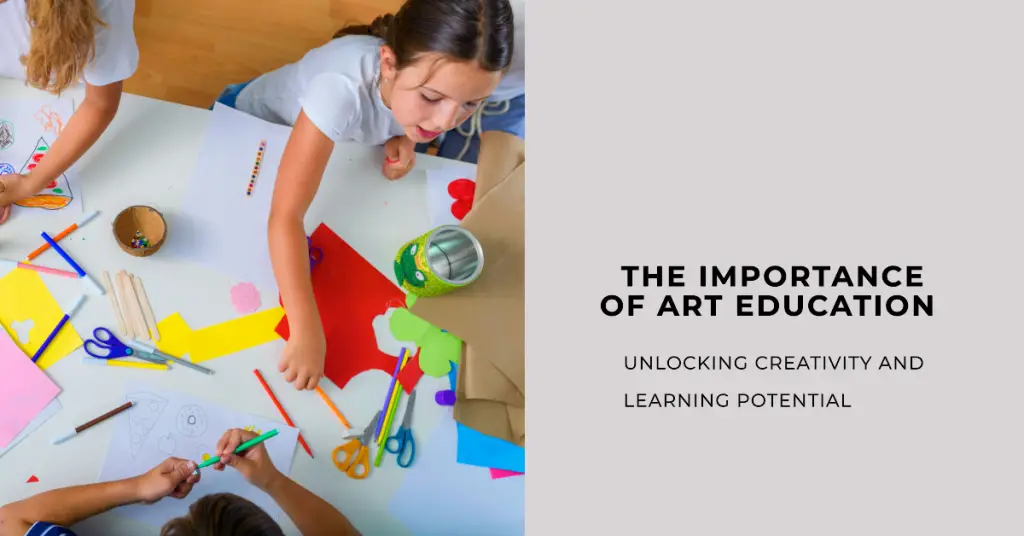
Art education is an essential part of any well-rounded education. It is about learning to draw or paint and developing creativity, critical thinking, and problem-solving skills.
Art education can help you express yourself, communicate your ideas, and understand the world around you in a deeper and more meaningful way.
Art education is vital for people of all ages, but it is especially crucial for children. Studies have shown that children participating in art programs perform better academically and have higher self-esteem and confidence.
Art education can also help children develop fine motor skills, hand-eye coordination, and spatial awareness.
It can also help them learn how to collaborate and work as a team, essential skills for success in any career.
Regardless of your role in the education system, whether you are a student, a parent, or an educator, it is imperative to recognize the critical role that art education plays in shaping well-rounded individuals and creating a more vibrant and culturally enriched society.
The Core of Art Education
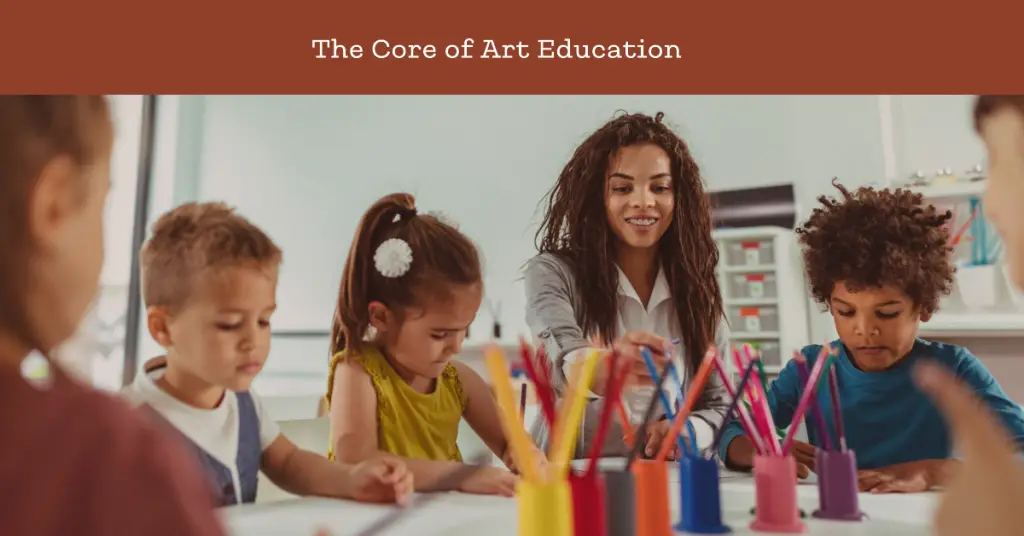
Art education is a crucial component of any educational program. It gives students the tools to develop their creativity, imagination, and critical thinking skills.
The core of art education is to develop the student’s ability to think creatively, express themselves visually, and appreciate the importance of art in our lives.
Art education is not only about learning how to draw or paint. It is a comprehensive program that studies art history, aesthetics, and art criticism.
It encompasses various art forms, including painting, sculpture, photography, architecture, and digital media.
One of the core elements of art education is that it teaches students to think creatively.
By encouraging students to experiment with different materials and techniques, they learn to think outside the box and develop innovative solutions to problems.
This skill is essential in many fields, including science, engineering, and business. Another critical aspect of art education is that it helps students to express themselves visually.
Students develop a deeper understanding of themselves and the world by learning how to use different art forms to communicate their ideas and emotions.
This skill is vital today, where visual communication is becoming increasingly important. Art education also plays a crucial role in promoting cultural literacy and appreciation.
Students learn about different cultures and their contributions to the art world by studying art history and different art forms.
This helps to promote diversity and understanding, which are essential in today’s globalized world. Art education is a vital component of any educational program.
It gives students the tools to develop their creativity, imagination, and critical thinking skills.
By teaching students to think creatively, express themselves visually, and appreciate the importance of art in our lives, art education prepares them for success in various fields.
Why Art Education is Critical
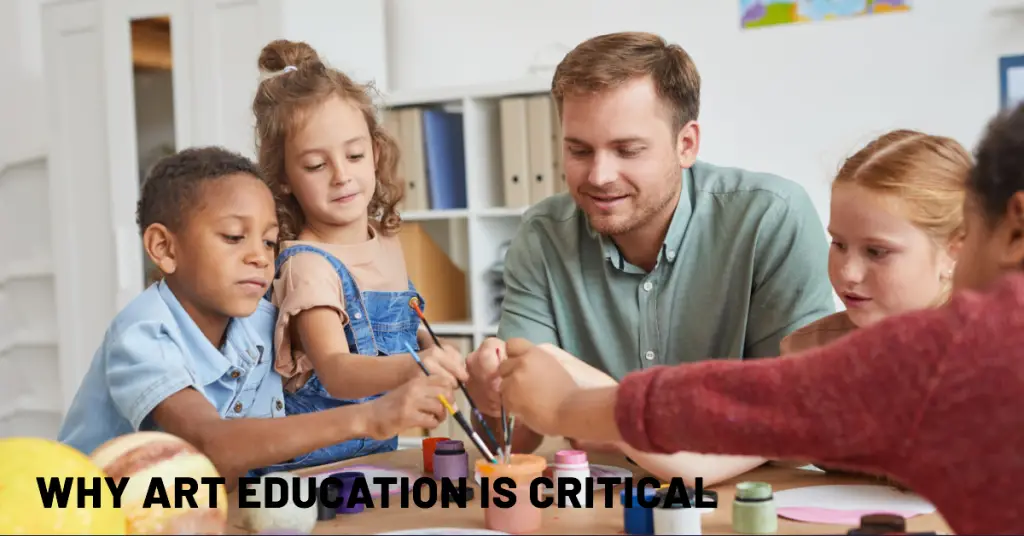
Art education is an essential academic discipline through which we understand and appreciate the world around us.
It is about learning to draw or paint and thinking creatively, critically, and expressively. Art education matters because it helps individuals develop skills essential for success in today’s world.
Importance of Art Education
Art education is crucial because it helps individuals develop cognitive, emotional, and social skills.
It provides a unique opportunity for individuals to explore and express their thoughts and emotions in a safe and supportive environment.
Art education also fosters creativity, imagination, and critical thinking, which are essential skills for success in today’s world.
Arts Education Matters
Arts education matters because it provides individuals with a well-rounded education. It helps individuals develop an appreciation for the arts and an understanding of their cultural significance.
Art education also helps individuals develop transferable skills in other areas, such as problem-solving, communication, and collaboration.
Art Education
This type of education encompasses more than just the technical skills needed to create art; it is also about developing an appreciation for and understanding of art in all its forms.
Art education allows individuals to explore different art forms and styles, learn about different artists and their works, and develop an understanding of art’s cultural and historical significance.
Finally, art education matters because it helps individuals develop skills essential for success in today’s world.
It provides individuals with unique opportunities to explore and express their thoughts and emotions in a safe and supportive environment.
It also fosters creativity, imagination, and critical thinking, essential skills for success today.
How Art Education Helps Students Develop
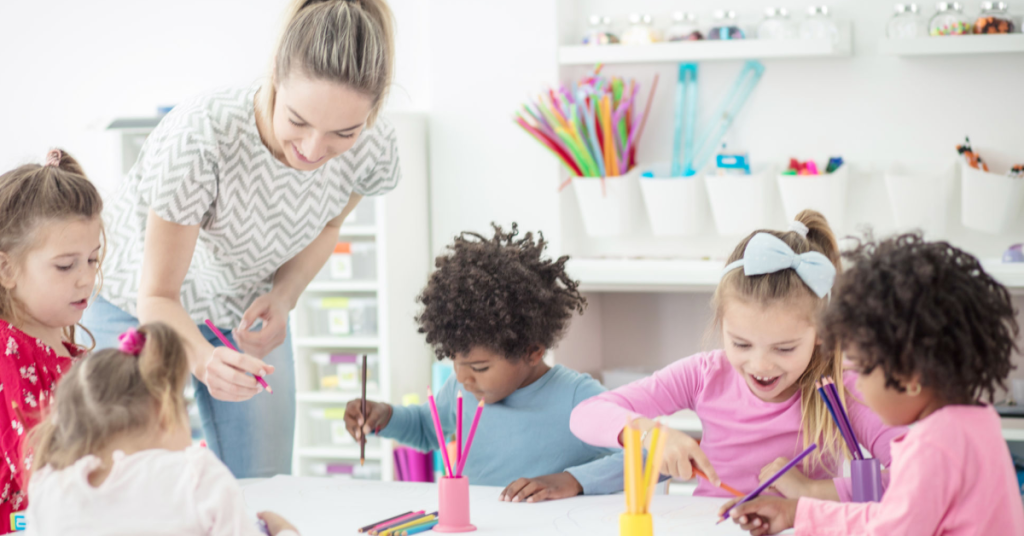
Art education is essential for students to expand their creativity and critical thinking skills.
It helps students learn how to express themselves through different mediums and encourages them to think outside the box.
Art education can also be rewarding for students as they develop their skills and see their progress over time.
Art education can help students in many ways:
- It can help students develop their problem-solving skills by encouraging them to think creatively and develop unique solutions.
- It can also help students develop their communication skills by teaching them how to express themselves through different mediums.
- It can also help students learn about history by studying art movements and the artists who created them.
- It can be a rewarding experience for students. As they develop their skills and see their progress over time, they can gain a sense of accomplishment and pride in their work.
- It allows students to express themselves and explore their creativity.
- It exposes students to different cultures and perspectives. This exposure can help students develop a well-rounded perspective on the world and appreciate different art forms.
In conclusion, art education is an integral part of student development. It can help students expand their creativity, critical thinking, and problem-solving abilities.
It can also be rewarding for students as they develop their skills and express themselves through different mediums.
Art Education in School Curriculum
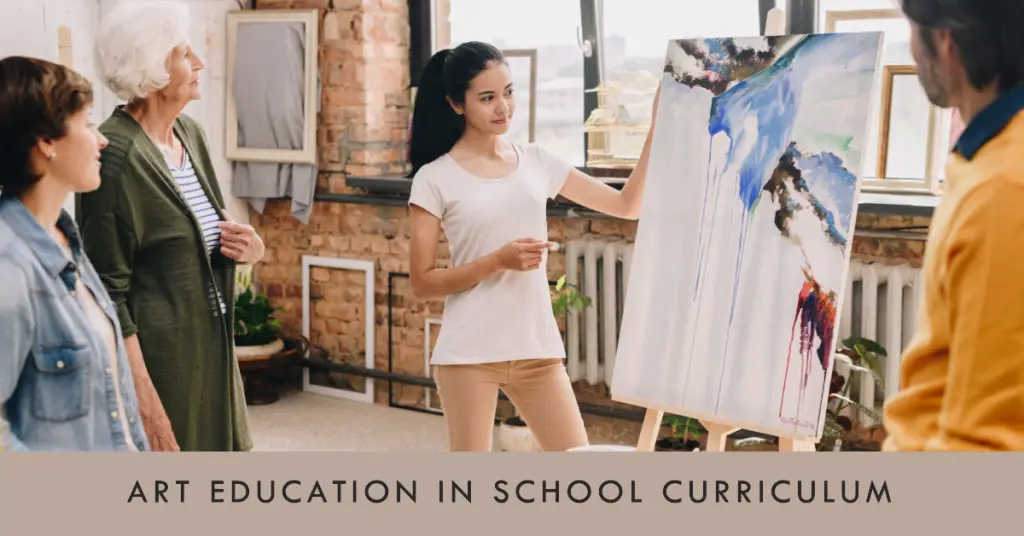
Art education is an essential academic discipline that should be included in the school curriculum. It allows students to express themselves creatively and develop critical thinking skills.
Art in the education system can help students learn about different cultures and traditions, and it can also help them develop an appreciation for the arts.
When art is included in the school curriculum, it becomes a subject taught just like any other subject.
Teachers who teach art can help students develop their skills in drawing, painting, and other forms of art.
They can also teach students about art history and the different movements and styles that have emerged throughout history.
Art education can be integrated into other subjects as well. For example, students can be asked to create art projects relating to a particular history or science topic.
This helps students connect what they learn in other subjects with their art education.
In addition to developing students’ creative skills, art education can also help them develop essential life skills.
For example, art education can teach students how to work collaboratively with others, set goals and work towards them, and develop their unique style and voice.
Overall, art is an integral part of the school curriculum. It can help students develop their creative skills, learn about different cultures and traditions, and develop essential life skills.
By including art education in the school curriculum, students can develop a well-rounded education that prepares them for success in all areas of life.
Role of Teachers in Art Education
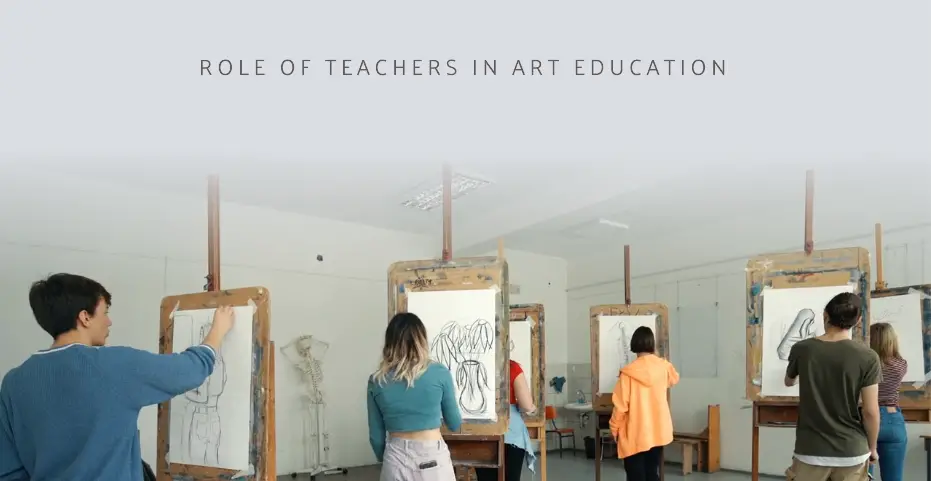
Art teachers play a vital role in providing students with a well-rounded education.
They are responsible for teaching students the fundamental skills and techniques necessary to create art and helping them develop their unique artistic style.
Here are some of the critical roles that teachers play in art education:
Providing Instruction
Teachers are responsible for instructing students in various art forms, including drawing, painting, sculpture, and more.
They teach students the basic principles of art, such as color theory, composition, and perspective, and help them develop their skills and techniques over time.
Encouraging Creativity
Teachers are also essential in encouraging students to be creative and explore their unique artistic style.
They allow students to experiment with different materials and techniques and help them develop their voice and vision as artists.
Fostering Critical Thinking
Art education is not just about creating beautiful works of art but also about fostering critical thinking skills.
Teachers help students learn how to analyze and interpret works of art and how to use critical thinking skills to create their art.
Building Confidence
Art can be a powerful tool for building confidence and self-esteem. Teachers help students develop a sense of pride and accomplishment in their work and encourage them to take risks and try new things.
Providing Support
Finally, teachers provide emotional support to students as they navigate the ups and downs of the creative process.
They offer guidance and encouragement and help students overcome any obstacles they may encounter along the way.
In conclusion, teachers play a critical role in art education. They instruct students, encourage creativity, foster critical thinking, build confidence, and provide emotional support.
Art education is essential to a well-rounded education, and teachers are essential to its success.
Different Forms of Art Education
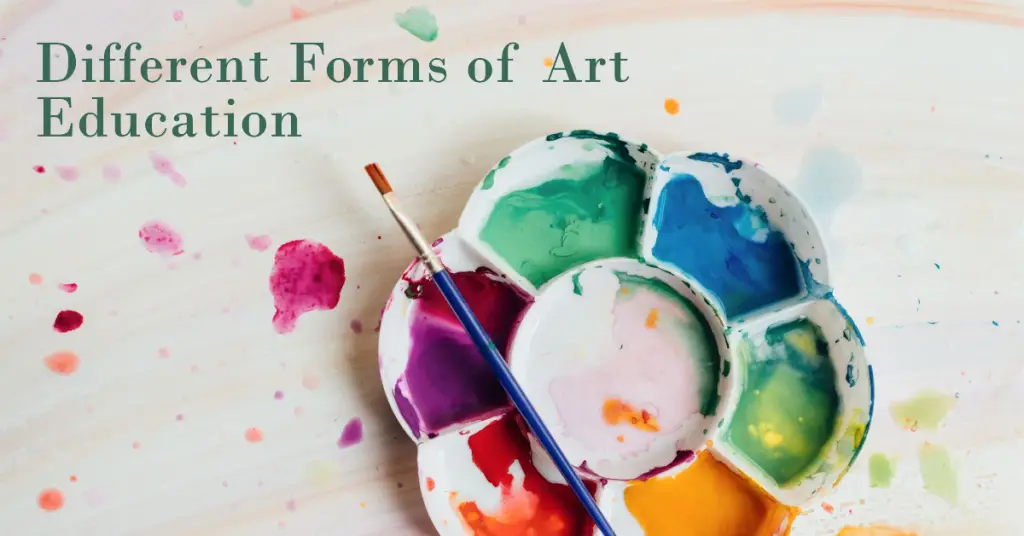
Art education can take many different forms. The most common forms of art education include dance, drama, and performance art.
Each form of art education has unique benefits and can help you develop different skills and abilities.
1. Dance
Dance is a form of art that involves movement and expression. It can be a great way to develop physical fitness, coordination, and balance.
Dance can also help you develop a sense of rhythm and timing, as well as an understanding of music and how it relates to movement.
Many different dance styles exist, including ballet, hip-hop, jazz, and modern dance. Each style has unique techniques and movements, so you can find one that suits your interests and abilities.
2. Drama
Drama is a form of art that involves acting and performance. It can be a great way to develop your communication skills and ability to express emotions and convey ideas.
Drama can also help you develop your creativity and imagination as you learn to create characters and tell stories.
There are many different forms of drama, including theater, film, and television. Each form has unique techniques and styles, so you can find one that suits your interests and abilities.
3. Performance Art
Performance art is a form of art that involves creating a live performance or event. It can be a great way to develop creativity and express yourself uniquely and meaningfully.
Performance art can also help you develop your communication skills as you learn to engage with an audience and convey your message.
Many forms of performance art exist, including music, spoken word, and visual art. Each form has unique techniques and styles, so you can find one that suits your interests and abilities.
Overall, art education can be a great way to develop your skills and abilities, as well as express yourself in a creative and meaningful way.
Whether you pursue dance, drama, performance art, or another art education, you can better understand yourself and the world around you.
Discovering Potential Through Art Education
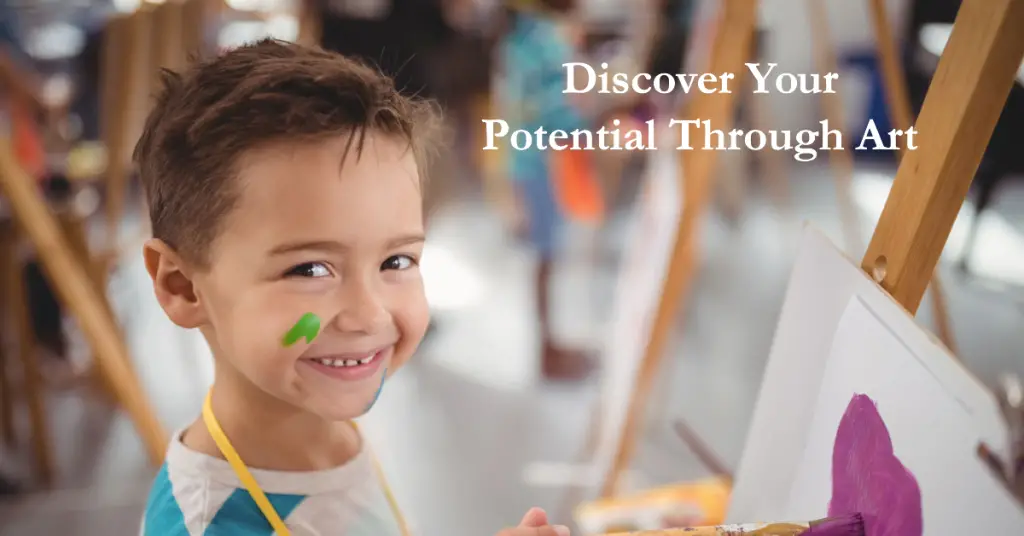
Art education is about learning the technical skills and techniques of creating art, discovering your potential, and expanding your horizons.
Through art education, you can discover new ways of thinking, problem-solving, and expressing yourself.
Art education can help you discover your strengths and weaknesses. By exploring different mediums and techniques, you can find what you are good at and what you need to improve.
You can also discover new interests and passions you never knew existed. This can lead to a more fulfilling and rewarding life.
Expanding your creativity is another benefit of art education. It can help you think outside the box and develop unique solutions to problems.
This can be applied in art and all aspects of your life. By expanding your creativity, you can also expand your opportunities.
Art education can also be rewarding. Seeing your progress and improvement can be a great source of satisfaction and motivation.
Additionally, creating art can be a therapeutic and relaxing activity, reducing stress and improving mental health.
In conclusion, art education is about creating art, discovering your potential, expanding your creativity, and rewarding yourself.
By taking art classes and exploring different mediums and techniques, you can discover new interests, improve your skills, and find a new source of fulfillment and enjoyment.
Closing Thoughts on Why is Art Education Important
In conclusion, art education is vital to children’s and adults’ development. It promotes creativity, critical thinking, problem-solving skills, and self-expression.
Individuals gain a deeper understanding of themselves and the world through various art forms.
Art education fosters imagination and innovation, enabling individuals to think outside the box and tackle challenges with a fresh perspective.
Therefore, it is crucial to prioritize art education in schools and communities to nurture well-rounded individuals who can contribute positively to society.
Let us recognize the importance of art education and support programs that provide opportunities for creative learning for all.
References:
- Hul, Jean Van’t. “The Benefits of Arts for Kids.” The Artful Parent, 5 May 2023, artfulparent.com/the-benefits-of-art-for-kids.
- King, Kevin. “8 Important Benefits of Art for Children That Everyone Should Know.” Painting to Gogh, 24 Nov. 2021, www.paintingtogogh.com/blogs/news/benefits-of-art-for-children.
- Smith, Fran. “Why Arts Education Is Crucial, and Who’s Doing It Best.” Edutopia, 28 Jan. 2009, www.edutopia.org/arts-music-curriculum-child-development.
- “Arts Education.” Americans for the Arts, www.americansforthearts.org/by-topic/arts-education.
- Long, Cindy. Express Yourself! Arts Integration in the Classroom | NEA. www.nea.org/advocating-for-change/new-from-nea/express-yourself-arts-integration-classroom.


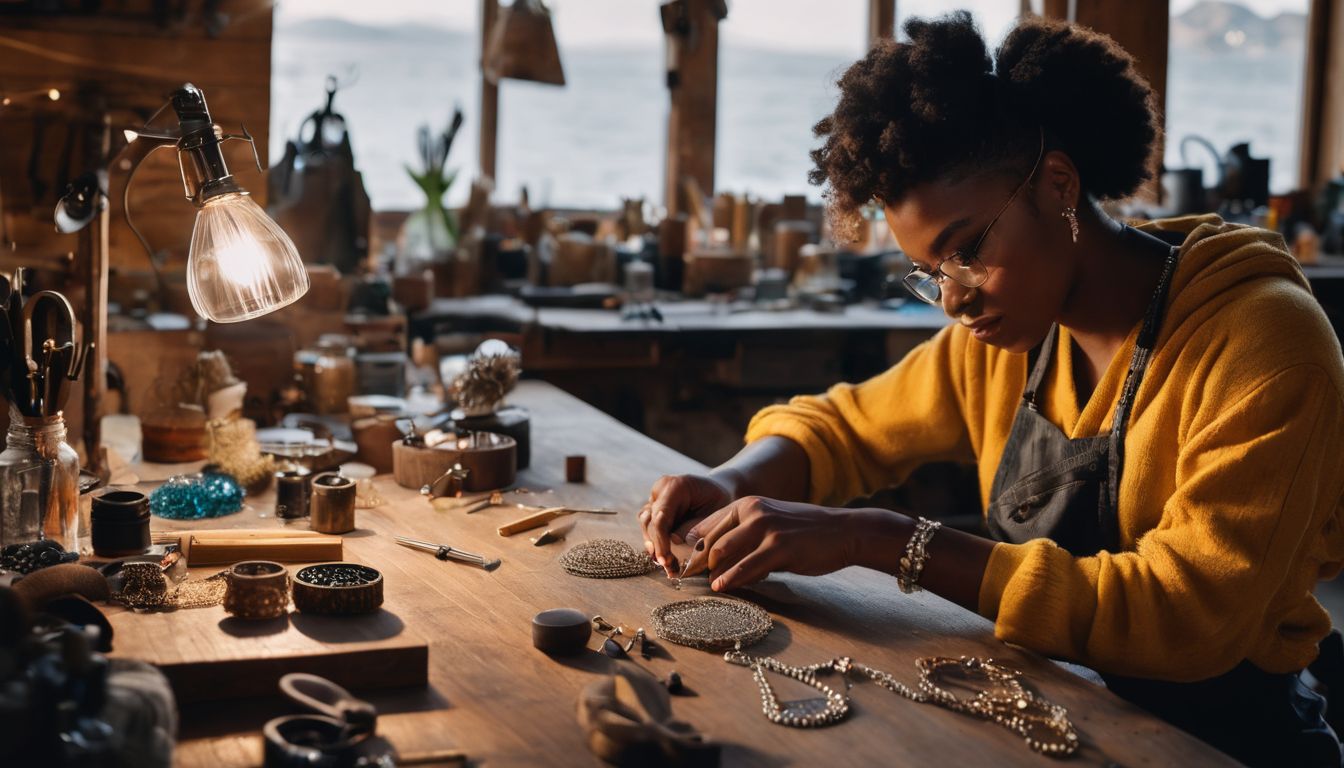

Leave a Reply